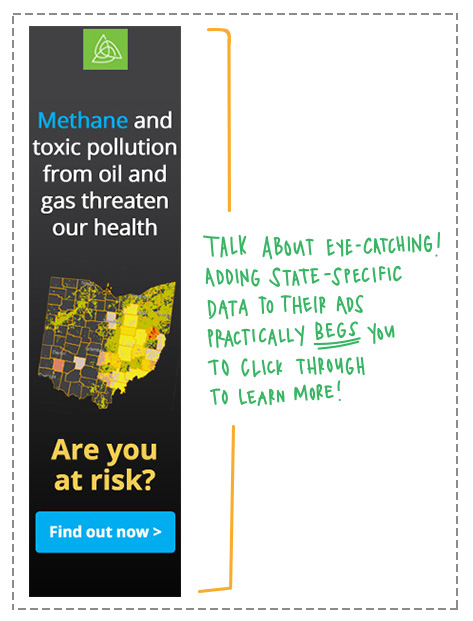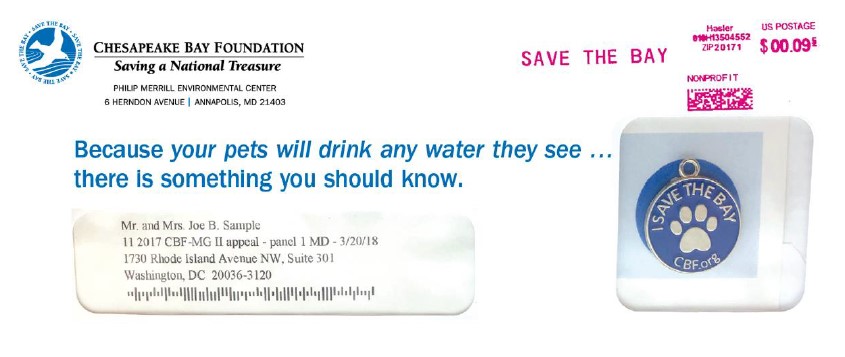Two Donor Identity Tests You Can Run
We’ve talked in some detail about how donor identity – the person’s core reason for giving to you – is the best way to segment your file.
But talk is cheap. Let’s see some results.
Can going deeper into donor identity improve results? And can looking at new and different reasons to give bring new people into your organization? (Spoiler: yes and yes.)
Going deeper for better results. For environmental organizations, it’s tempting to think of “environmentalist” as a monolithic group. If all environmentalists have similar reasons to give, you can get away with one message to all.
But alas. Or, rather, yay, because there are several fault lines (depending on the organization and the donor base) where you can profitably learn more about your donors and customize their experience:
 Globalists versus national-focused versus local focused. Not only can this change what issues you talk about (e.g., climate change versus the impact of a local landfill or reforestation project), but it can also change how you talk about them. A globalist would be interested in the impact of methane emissions on Madagascar; the localist would respond better to this ad at right mentioned in M+R’s recent and excellent Creating Ads that WORK. (Don’t worry, no test data there so this doesn’t count as one of the two tests.)
Globalists versus national-focused versus local focused. Not only can this change what issues you talk about (e.g., climate change versus the impact of a local landfill or reforestation project), but it can also change how you talk about them. A globalist would be interested in the impact of methane emissions on Madagascar; the localist would respond better to this ad at right mentioned in M+R’s recent and excellent Creating Ads that WORK. (Don’t worry, no test data there so this doesn’t count as one of the two tests.)- Tree people versus water people versus air people (to oversimplify). To whom should the coral reef appeal go? How about the national forest one?
- Future generations environmentalists – I give to save this land for my children and my grandchildren (but not my greatgrandchildren, because my grandchildren are too young to be having sex) versus ecosystems environmentalists – I give to save this land because of the flora and fauna, because of its intrinsic worth rather than what it matters to humans.
You can see how messaging would change significantly if you discovered you had substantial numbers of people on both sides of one of these splits. No one message would satisfy them; subtly altering your message to fit identity could turn you from “one of my environmental organizations” to “my favorite environmental organization”, because you get me.
Recently we tested a “general conservationist” identity versus “users of the land (hikers, bikers, climbers, etc.)” identity. Your mind is probably already spinning with the messaging possibilities. But what if we dialed that back to simply focus on naming the group in question? After all, validating there is a difference is a cheap and easy first test before even starting to concoct different messaging streams.
So we advertised to two different sets of Facebook users:
- those who identified with environmental groups or the environmental movement BUT NOT hikers, bikers, climbers, and so on
- hikers, bikers, climbers, and so on BUT NOT those who identified as environmentalists
Each group got traditional (read: control) ads from an environmental organization, along with ads that began “as a conservationist” or “as an outdoor enthusiast.” Turns out, those ads that matched identity to the identity group had a 12-14% CTR lift over no or mismatched identity. Enough information here to start brainstorming how else we might be able to lift responses by treating donors differently.
More than that, these groups performed similarly in click-through rate. This is notable because we specifically chose outdoor enthusiasts who didn’t think of themselves as environmentalists. And this for an environmental organization. Any time you can bring new donors into an organization or build on an identity to explain to them why they should support you, that’s a double win. It’s also the next test.
Testing a non-traditional identity. The Chesapeake Bay Foundation wanted to expand the types of people who would think of giving to them. So they went after an animal lover identity.
No, really. Here’s the mail package:

This doubled the response rate in co-op lists and produced a 30% lift to animal lists, opening up a new potential universe for acquisition.
Not all the manifestations of a donor’s identity will have occurred even to that donor. They gave pet owners a reason that their responsibilities to their furry love – that their identity – included watershed protection. Given the increases in response rate, that’s a connection those donors would not have made on their own. Granted, you will now have to treat these donors differently within the organization to retain them, but that falls under the category of “great problem to have.”
While both tests are from environmental organizations, neither are all that restricted. Do you have a subsection of your file that gives to you for religious reasons, even though you are a secular organization? Do you see reasons for giving in your donor feedback information that aren’t the ones you are using to acquire and retain?
Any other good identity tests the Agitator Community would like to share?
Nick



hi, interesting. Well, puppys and kittens tend to have such a widespread interest.
I didn’t test this, but anecdotally:
I did an appeal once for a homeless support/housing organization, showing one of the clients with his dog.
The response was higher than any of the prior appeals with a story and picture of a person only.
Adding the dog in the picture and story seemed to lift results. The donor was helping not just the individual but also an animal… two for one…